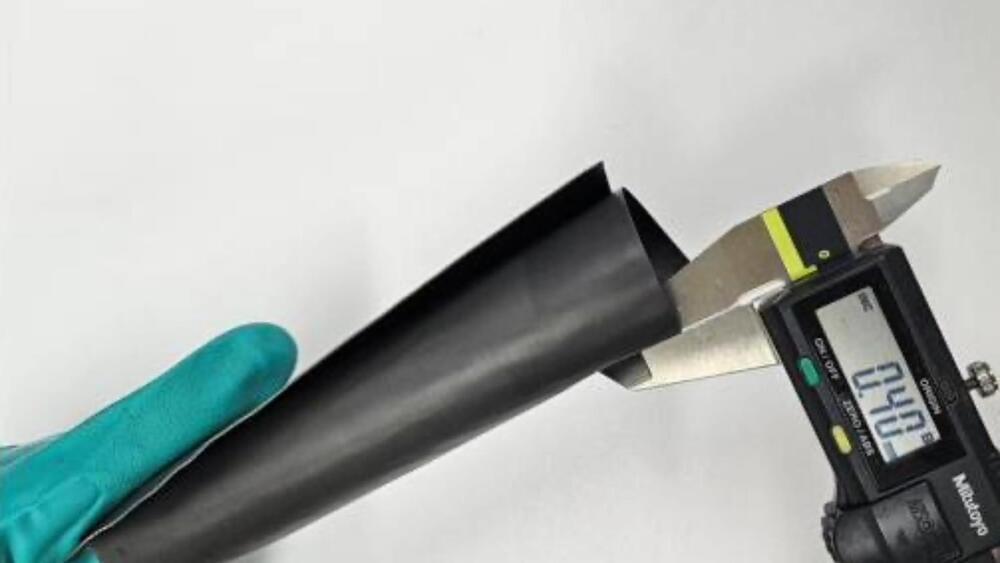Archive for the ‘robotics/AI’ category: Page 74
Oct 30, 2024
AI’s Puzzle-Solving Limitations: Vision-Language Models Struggle with Human-Like Pattern Recognition
Posted by Dan Kummer in category: robotics/AI
A new study shows that even today’s most advanced AI vision-language models can’t compare with human comprehension capabilities.
Oct 30, 2024
Google CEO says more than a quarter of the company’s new code is created by AI
Posted by Genevieve Klien in categories: business, robotics/AI
Oct 29, 2024
3D laser bioprinter designed for precise human tissue engineering
Posted by Dan Kummer in categories: bioengineering, bioprinting, biotech/medical, robotics/AI

A way to re grow new parts, perfect DNA match, eventually? Will take Agi / ASI to realize full potential, we ll see.
For this, the researchers have created a compact bioprinter to develop biological tissues with microfilament structures. He is now working to bring this technology to market.
Continue reading “3D laser bioprinter designed for precise human tissue engineering” »
Oct 29, 2024
‘World-1st’ ultra-thin film absorbs over 99% of electromagnetic waves
Posted by Genevieve Klien in categories: internet, robotics/AI

Scientists have developed a new material: an ultra-thin film that can absorb over 99% of electromagnetic waves.
The Korea Institute of Materials Science (KIMS) states it to be the “world’s first ultra-thin film composite material capable of absorbing over 99% of electromagnetic waves.”
Continue reading “‘World-1st’ ultra-thin film absorbs over 99% of electromagnetic waves” »
Oct 29, 2024
Idaho State Researcher Develops Algorithm to Model Brain Activity
Posted by Dan Kummer in categories: biotech/medical, information science, robotics/AI
Thanks to an algorithm created by an Idaho State University professor, the way engineers, doctors, and physicists tackle the hard questions in their respective fields could all change.
Emanuele Zappala, an assistant professor of mathematics at ISU, and his colleagues at Yale have developed the Attentional Neural Integral Equations algorithm, or ANIE for short. Their work was recently published in Nature Machine Intelligence and describes how ANIE can model large, complex systems using data alone.
“Natural phenomena–everything from plasma physics to how viruses spread–are all governed by equations which we do not fully understand,” explains Zappala. “One of the main complexities lies in long-distance relations between different data points in the systems over space and time. What ANIE does is it allows us to learn these complex systems using just those known data points.”
Oct 29, 2024
Softbank CEO says ‘super AI’ will arrive in 2035 and cost $9T
Posted by Roman Kam in category: robotics/AI
Oct 29, 2024
Nvidia’s Huang Teams With Asia’s Richest Man on Blackwell AI Hub
Posted by Shailesh Prasad in category: robotics/AI
Is AI going to take your job? Here’s what Nvidia CEO Jensen Huang told Bollywood star Akshay Kumar.
Read more on the chip giant’s partnerships with the biggest Indian corporates, including Ambani’s Reliance, announced at Nvidia’s AI summit in Mumbai.
Nvidia Corp.’s Jensen Huang struck a partnership with Asia’s richest man, Mukesh Ambani, to build out artificial intelligence infrastructure and spur the technology’s adoption in the world’s most populous country.
Oct 29, 2024
China has just launched the world’s first autonomous flying taxis
Posted by Shailesh Prasad in categories: robotics/AI, transportation
China has just launched the world’s first autonomous flying taxis, cutting a 1-hour drive down to just 7 minutes!
These eVTOL (electric Vertical Take-Off and Landing) aircraft feature 16 propellers and carry two passengers up to 30–40 km. They offer a thrilling glimpse into the future of urban transport. Each pilot-free flight is safely monitored from a high-tech command center.
What do you think about this? ☝️
Oct 29, 2024
Development of novel flavonoid senolytics through phenotypic drug screening and drug design
Posted by Arthur Brown in categories: biotech/medical, life extension, robotics/AI
 Accumulation of senescent cells drives aging and age-related diseases. Senolytics, which selectively kill senescent cells, offer a promising approach for treating many age-related diseases. Using a senescent cell-based phenotypic drug discovery approach that combines drug screening and drug design, we developed two novel flavonoid senolytics, SR29384 and SR31133, derived from the senolytic fisetin. These compounds demonstrated enhanced senolytic activities, effectively eliminating multiple senescent cell types, reducing tissue senescence in vivo, and extending healthspan in a mouse model of accelerated aging. Mechanistic studies utilizing RNA-Seq, machine learning, network pharmacology, and computational simulation suggest that these novel flavonoid senolytics target PARP1, BCL-xL, and CDK2 to induce selective senescent cell death. This phenotype-based discovery of novel flavonoid senolytics, coupled with mechanistic insights, represents a key advancement in developing next-generation senolyticss with potential clinical applications in treating aging and age-related diseases.
Accumulation of senescent cells drives aging and age-related diseases. Senolytics, which selectively kill senescent cells, offer a promising approach for treating many age-related diseases. Using a senescent cell-based phenotypic drug discovery approach that combines drug screening and drug design, we developed two novel flavonoid senolytics, SR29384 and SR31133, derived from the senolytic fisetin. These compounds demonstrated enhanced senolytic activities, effectively eliminating multiple senescent cell types, reducing tissue senescence in vivo, and extending healthspan in a mouse model of accelerated aging. Mechanistic studies utilizing RNA-Seq, machine learning, network pharmacology, and computational simulation suggest that these novel flavonoid senolytics target PARP1, BCL-xL, and CDK2 to induce selective senescent cell death. This phenotype-based discovery of novel flavonoid senolytics, coupled with mechanistic insights, represents a key advancement in developing next-generation senolyticss with potential clinical applications in treating aging and age-related diseases.
LJN and PDR are cofounders of Itasca Therapeutics, developing senotherapeutics for aging and age-related diseases. LJZ, LJN, PDR and the University of Minnesota have filed a provisional patent on the application of flavonoid analogs, including SR29384 and SR31133, as a strategy to treat age-related diseases.















